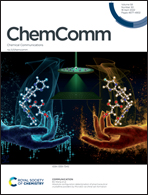Dopant-free hole-transporting materials for stable Sb2(S,Se)3 solar cells†
Abstract
Herein, we demonstrate that a thiophene-modified quinoxaline core small molecule can be applied in Sb2(S,Se)3 solar cells. We reveal that the interaction between thiophene and Sb2(S,Se)3 through the Sb–S bond essentially improves the interfacial hole-extraction ability. This study provides a cost-effective dopant-free hole-transporting material for inorganic thin film solar cell applications with excellent stability.



 Please wait while we load your content...
Please wait while we load your content...